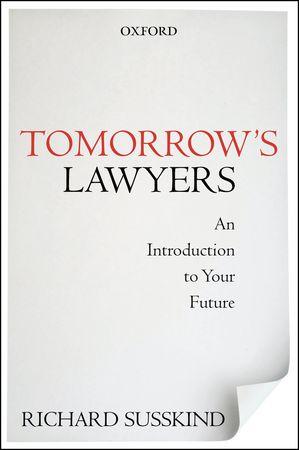Document Automation beyond the Contract and Why Richard Susskind Is Right On!
2 min read
Russ Edelman
As I made my way to the Microsoft SharePoint Conference 2014, I began my dive into Richard E. Susskind’s latest book Tomorrow’s Lawyers: An Introduction to Your Future. The book is a must-read for anyone in a legal department or law firm. However, the subtext, IMHO, has relevance well beyond those who practice law. I would argue that the spirit of the book is all about adding value in new ways. Mr. Susskind’s basic premise is that lawyers must relinquish their dated practices of billing by the hour and instead look for collaborative and economic ways to help both firm and client. 
Why do I bring Professor Susskind into the fray? Well, throughout the book, he references disruptive technologies for attorneys and the first on the list is document automation, the ability to automatically generate documents (typically contracts) based on a person’s completing a simple form.
For purposes of disclosure, Contracts 365 has a robust document automation tool called the Contract Creation Module (CCM). I would personally argue that CCM takes the longstanding concept of document automation and makes it a very modern and useable experience, unlike the legacy automation tools of the past. But whether the automation product is ours or one of the other vendor's, there is a preconceived misperception, not even identified by the big R (Richard), that automation is all about the contract, not its many vital supporting documents such as amendments, exhibits, and addenda. And these documents are all excellent candidates for automation.
Undoubtedly, contract automation is a powerful value-add for the right contract types, and I do stress: the right contract types. When contract volume is high, when negotiations are typically low, and when the language in the contract can be easily variablized (real sounding but non-existing word), automation is fantastic. Examples may include NDAs or standard service agreements, where automation is a great fit.
However … grant for a moment that some contracts need to be hand-crafted, that their complexity calls for the artisanal approach many lawyers take to framing them. Behind even these contracts are all of the supporting amendments, exhibits, addenda, etc., that do much of the heavy lifting in contractual relationships. The data that drives the variables in the supporting documents probably exists in a master record as well. And it is here that organizations can further leverage their automation technology, where the supporting documents offer some substantive low-hanging fruit.
How about a case in point? One of our clients, a national health care provider of the “bluest" kind, has been successfully using our software for a number of years. On an annual basis, they have a need to amend the standard contract for thousands of providers. This process involves the creation of a separate cover letter, amendment text, and signing process for the provider. Enter automation and electronic signature, and see how the picture changes. Rather than creating a custom “package" for each provider, our client quickly sets up a CCM template, points it to the existing contract database, configures the process and includes DocuSign for electronic signature. The outcome: thousands of documents are automatically generated and sent via DocuSign for signature. The fully executed documents are then stored back into the system. What would have taken months of work, along with the pain of follow-up, is now configured and managed with two to three days of effort. And even without their use of e-signature, their process would be greatly streamlined and less error-prone.
To borrow a term from Richard Susskind, that’s some disruptive value!!
(Image by permission of Oxford University Press.)
Subscribe and receive our latest blog articles in your work email.
We value your privacy. By subscribing, you agree to receive our newsletter. We’ll protect your personal data and use your email only for sending useful information. You can unsubscribe anytime. For details on data handling, please see our privacy policy.
Ready to Learn More?
Optimize your team’s contract lifecycle management with Contracts 365®